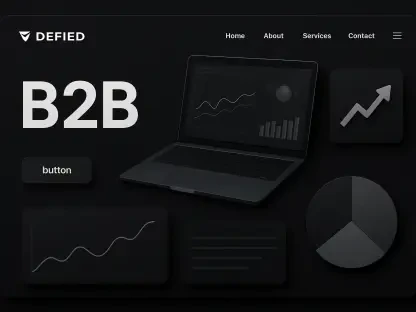Setting the Stage for AI-Driven Advertising Shifts
In the dynamic realm of digital marketing, a staggering statistic has emerged: over 70% of search interactions on Google now involve some form of AI-generated response, underscoring the rapid integration of artificial intelligence into search functionalities. With Google Ads increasingly appearing within AI Mode—a feature that crafts tailored answers to user queries—this analysis aims to dissect the implications of this trend for the advertising market, offering a comprehensive look at how sponsored content is reshaping search experiences. The importance of this shift cannot be overstated, as it signals a fundamental change in how brands connect with consumers in an AI-dominated landscape.
The purpose of this market analysis is to provide clarity on the current expansion of Google Ads within AI Mode and to forecast its potential trajectory. By examining real-time trends, visibility impacts, and regional dynamics, this exploration seeks to equip advertisers with the insights needed to adapt to an evolving ecosystem. The focus is on understanding how this integration affects market competition, user engagement, and strategic planning for businesses worldwide.
Analyzing Market Trends in AI Mode Advertising
Current Patterns: Rising Visibility of AI Mode Ads
The integration of Google Ads into AI Mode has gained significant traction, with frequent sightings reported across diverse search queries. This marks a deliberate move by Google to embed sponsored content within AI-generated responses, moving beyond traditional search result placements. Observations from industry professionals indicate a notable uptick in ad appearances, suggesting that what was once a limited test is now a strategic expansion. This shift is pivotal as it alters the competitive landscape, offering early adopters a chance to capture attention in less crowded spaces while challenging established norms of ad positioning.
A deeper look reveals that these ads are often seamlessly woven into conversational answers provided by AI Mode, aligning closely with user intent. This format diverges from the conventional top-of-page or sidebar ads, creating a more integrated user experience. However, this blending raises concerns about transparency, as users may struggle to distinguish between organic content and paid promotions if labeling isn’t clear. The market implication here is twofold: enhanced engagement potential for advertisers, but also a risk of eroding trust if not managed with care.
Data Insights: Impact on Engagement and Click-Through Metrics
Analyzing the data surrounding AI Mode ads highlights a complex impact on engagement metrics like click-through rates (CTR). Unlike traditional search ads that compete in a familiar linear format, ads in AI Mode often appear as part of a synthesized response, potentially boosting CTR by matching user needs more precisely. Early evidence suggests that contextually relevant ads in this format can outperform standard placements, providing a unique opportunity for brands to stand out in a cluttered digital space.
Yet, the data also points to challenges in maintaining visibility consistency. The algorithms driving AI Mode prioritize user relevance, which can unpredictably affect ad rankings compared to traditional search. Advertisers must navigate this uncertainty, balancing the promise of higher engagement against the risk of reduced control over placement. Market analysis indicates that businesses investing in intent-driven content may see better results, but the lack of predictability in AI prioritization remains a hurdle to widespread adoption.
Regional Dynamics: Market-Specific Adoption and Challenges
Beyond engagement metrics, the rollout of AI Mode ads exhibits significant regional variations that influence market strategies. In the U.S., sightings are more frequent, reflecting an aggressive push to test and refine this feature in a large, competitive market. Conversely, regions with stringent data privacy regulations, such as Europe, may experience slower or more restricted implementations, as compliance with local laws could dictate how ads are displayed or targeted within AI responses.
Another layer of complexity lies in cultural and linguistic nuances that AI systems might misinterpret, leading to mismatched ad content in diverse markets. For instance, idiomatic expressions or local search behaviors could skew targeting accuracy, impacting ad relevance. This suggests that Google may adopt a phased, market-specific approach to scaling AI Mode ads, tailoring strategies to align with regional user expectations and regulatory frameworks. Advertisers must account for these disparities when planning global campaigns, ensuring adaptability to varying market conditions.
Future Projections: The Trajectory of AI-Driven Ads
Technological Advancements Shaping the Market
Looking toward the horizon, several technological trends are poised to redefine the market for AI Mode advertising. Enhanced personalization stands out as a key driver, with AI expected to refine ad targeting based on real-time user behavior and individual preferences. This could lead to hyper-relevant campaigns that adapt dynamically during a search session, offering unprecedented precision in reaching the right audience at the right moment.
Additionally, innovations like voice search compatibility and potential augmented reality integrations could expand the scope of AI Mode ads beyond text-based interactions. Imagine sponsored content delivered through voice assistants or overlaid on real-world visuals—these advancements could create immersive ad experiences. Market projections suggest that such technologies will likely gain traction over the next few years, pushing advertisers to rethink creative formats and delivery mechanisms to stay competitive.
Economic and Regulatory Outlook
Economically, a broader rollout of AI Mode ads is anticipated to intensify competition, potentially driving up costs as more businesses vie for prime placement in AI-generated responses. This could strain budgets for smaller advertisers while benefiting larger players with resources to experiment and optimize. On the regulatory front, increasing scrutiny over data usage in AI-driven advertising may introduce new compliance requirements, particularly in privacy-sensitive regions, shaping how quickly and extensively this feature scales globally.
Forecasts indicate that within a short span, from the current year to 2027, AI Mode could become a cornerstone of Google’s advertising ecosystem, fully integrated into conversational and visual search formats. Speculative analysis also suggests that advertisers might soon leverage AI tools to craft campaigns that evolve mid-interaction, responding to user inputs in real time. These possibilities underscore the need for businesses to remain agile, testing AI Mode ads now to prepare for inevitable shifts in market dynamics and consumer behavior.
Reflecting on Insights and Strategic Pathways
Looking back, this market analysis delved into the significant expansion of Google Ads within AI Mode, uncovering critical trends that reshaped digital advertising strategies. The increased visibility of ads in AI-generated responses marked a turning point, offering both opportunities for enhanced engagement and challenges in maintaining user trust. Regional variations and future technological advancements further highlighted the complexity of this evolving landscape, providing a nuanced view of its impact on global markets.
For actionable next steps, businesses are encouraged to prioritize experimentation with AI Mode ad formats, focusing on crafting highly relevant content that aligns with user intent. Monitoring regional regulatory developments proves essential to avoid compliance pitfalls, while early investment in understanding AI-driven metrics offers a pathway to gaining a competitive edge. Ultimately, the insights gathered point toward a future where adaptability and innovation become the cornerstones of success in navigating this transformative shift in search advertising.









